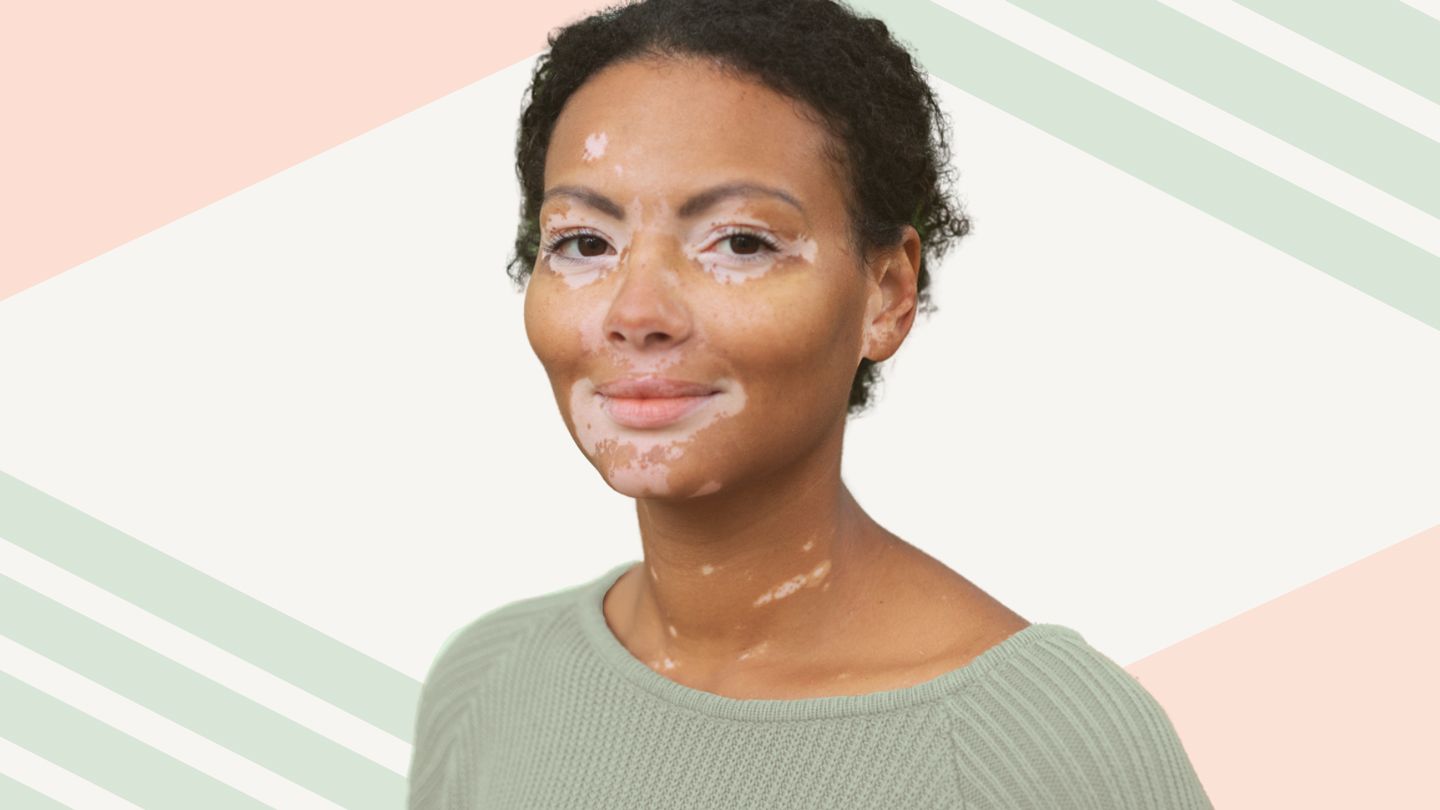Terrence J and Other Celebrities Who Have Spoken Out About Vitiligo
Vitiligo is an autoimmune condition that causes patches of skin to lose pigmentation. The disorder affects about 1-2% of the population. While not life-threatening, vitiligo can significantly impact a person's quality of life and self-esteem.
Several celebrities have opened up about their experiences with vitiligo in order to raise awareness and help others feel less alone. Here are some of their stories:
Terrence J
Television host and actor Terrence J first spoke publicly about his vitiligo in 2019 after a noticeable white patch developed on his forehead. He had been privately battling the condition for years prior with spots on his hands, elbows, and knees.
Terrence shared that growing up, kids would bully him and call him cruel names like "cow" due to his white spots. He covered up his vitiligo for years feeling ashamed and embarrassed.
After finally embracing his skin, Terrence said he hopes being vocal about vitiligo will inspire others living with it, especially in the Black community where pigment disorders carry extra stigma. He encourages fans to embrace their uniqueness.
Winnie Harlow
Model Winnie Harlow skyrocketed to fame while competing on America's Next Top Model, becoming known for the prominent vitiligo spots on her face and body. Prior to being discovered, she was severely bullied as a child for looking different.
Winnie has become an outspoken advocate for self-love and acceptance. She views her skin as something that makes her distinctive from other models. By speaking openly about her vitiligo, Winnie aims to challenge narrow beauty standards in the fashion industry.
Michael Jackson
The late King of Pop long battled vitiligo and its associated skin discolorations privately before finally opening up. Michael Jackson revealed he developed vitiligo in the mid-1980s, with noticeable light spots around his eyes, chin, and fingers.
To even out his skin tone for performances, Michael bleached his skin with creams. However, this led to dangerous whitening and harmful rumors that he was intentionally trying to appear Caucasian. Michael encouraged vitiligo awareness to help dispel myths.
Jon Hamm
In an interview, actor Jon Hamm disclosed that he has vitiligo, with small spots developing on his hands over the past decade. He tries to shield his hands from the sun to avoid exacerbating the condition.
As a public figure, Jon sometimes finds vitiligo annoying having to conceal spots while filming. But he aims to bring more attention to the disorder by opening up. He wants his vitiligo to help others feel less alone and imperfect.
Scott Grimes
Scott Grimes, known for ER and American Dad, began spotting unpigmented patches on his scalp in his 20s which spread to his ears, chin, chest, and groin. Doctors diagnosed him with vitiligo and told him there was no cure.
Scott admits he was initially terrified of people knowing he had vitiligo. But over time, he gained the courage to discuss it and not feel embarrassed. He even incorporated his vitiligo into his animated American Dad character.
Thomas Lennon
Comedian Thomas Lennon from Reno 911 battled vitiligo for many years before opening up. He first developed white spots on his scalp and hands in childhood. Doctors prescribed topical steroids but they only provided temporary pigment return.
Thomas rarely spoke of his vitiligo publicly, once saying he "looked like a reverse cow." He finally became more vocal to increase vitiligo visibility and donate to research after connecting with Michael Jackson over their shared condition.
Amitabh Bachchan
Bollywood superstar Amitabh Bachchan has lived with vitiligo for over 40 years. He first noticed de-pigmented patches on his shins in the late 1970s, likely triggered by a motorcycle accident injury.
Amitabh initially covered his vitiligo spots with makeup while filming. But over time, he embraced his unique look as a trademark sign of his characters. Amitabh hopes his openness helps remove the stigma around vitiligo in India.
LeVi Kaumatule
NFL player LeVi Kaumatule was diagnosed with vitiligo at just 10 years old. By high school, the majority of his upper body lacked pigment due to rapidly spreading vitiligo.
Being a star athlete with a visible skin condition was challenging. But LeVi owned his vitiligo as something that made him unique. He even declined UV treatment to possibly regain pigment, preferring not to hide his true self.
What Causes Vitiligo?
Vitiligo occurs when melanocytes, the pigment-producing cells in skin, are destroyed by the immune system. This causes white patches as melanin can no longer be produced in affected areas.
The exact triggers for melanocyte death are unknown. Genetics, autoimmunity, stress, sun exposure, and certain toxins are hypothesized triggers. Vitiligo is not contagious.
Types of Vitiligo
There are several types of vitiligo with varying causes and progression:
- Non-segmental (generalized): Most common type. White patches appear symmetrically on both sides of the body.
- Segmental: Depigmentation only affects one area or dermatome segment.
- Universal: Complete or near-complete pigment loss over the entire body surface.
- Focal: Depigmentation limited to one or a few isolated spots.
Vitiligo Signs and Symptoms
The main symptoms of vitiligo include:
- Flat white patches of skin, often first noticed on the face, hands and wrists
- Patches that gradually increase in size and number over time
- Loss of color in the tissues lining the inside of the mouth and nose
- Premature whitening or graying of the scalp hair, eyebrows, eyelashes, and beard
- Loss of color in the retina of the eyes in rare cases
Diagnosing Vitiligo
Doctors can usually diagnose vitiligo through a physical exam alone by observing characteristic depigmented patches. They may use a special woods lamp to illuminate loss of pigment.
Ruling out other conditions like tinea versicolor, leucoderma, piebaldism and nevus depigmentosus is important. A skin biopsy may be done to confirm vitiligo in ambiguous cases.
Living with Vitiligo - Coping and Support
Coping with vitiligo emotionally and socially can often be a greater challenge than managing the medical aspects. Many with vitiligo report feelings of depression, anxiety, low self-esteem and social isolation.
Several coping tips and sources of support can help those struggling to adjust:
- Join a support group: Whether online or in-person, connecting with others who share your experiences is invaluable.
- See a therapist: Work through emotional challenges related to self-image, relationships, social anxiety, etc.
- Conceal spots cosmetically: Use concealers and foundation to mask vitiligo if desired. Micropigmentation can camouflage spots.
- Wear sun protection: Sunscreen helps avoid sunburns and limit further spread of depigmentation.
- Boost confidence: Focus on positive attributes unrelated to appearance. Wear clothes you feel great in.
- Educate others: Correct misconceptions those in your life may have regarding vitiligo.
- Relaxation practices: Yoga, meditation, nature walks. Reduce stress levels when possible.
Remember there are no flaws with your skin - the only flaws are in those who fail to see your beauty!
Treatment Options for Vitiligo
While vitiligo has no cure, various treatments can stabilize pigment and possibly repigment the skin. Options include:
Topical Corticosteroids
Prescription steroid creams and ointments applied to depigmented patches can restore some color by decreasing inflammation around melanocytes. Results vary greatly between individuals.
Calcineurin Inhibitors
Topical immunomodulators like tacrolimus and pimecrolimus dampen the immune response to prevent further melanocyte destruction and induce repigmentation over time.
Light Therapy
Phototherapy with UVA or UVB light can stimulate melanocyte activity and pigment production in treated areas when used early. Home light units are also available.
Skin Grafting
Surgically transplanting melanocyte-rich skin cells from normally pigmented areas can restore permanent color in vitiliginous patches. Best for small, stable areas.
Micropigmentation (Tattooing)
Inking dots of pigment into involved skin mimics natural pigmentation. Used to cosmetically camouflage stable vitiligo spots. Multiple treatments needed.
Depigmentation
In cases of extensive vitiligo, bleaching agents may be used to lighten remaining normal skin to achieve uniform pallor. Permanent option.
Discuss all vitiligo treatment options thoroughly with your dermatologist to determine appropriate approaches based on your skin type, extent of involvement, and treatment goals.
The Bottom Line
Vitiligo is a chronic pigment disorder that can greatly impact one's self-image and emotional wellbeing. By bravely speaking out about their vitiligo, celebrities like Terrence J, Michael Jackson, and Winnie Harlow help destigmatize the condition and inspire others afflicted to embrace their uniqueness.
While vitiligo has no cure, various treatment options can restore cosmetic appearance. Equally important is building emotional resilience through counseling, support groups and self-love practices. With time and perseverance, it is possible to thrive beautifully with vitiligo.
FAQs
What famous people have vitiligo?
Some celebrities with vitiligo include Michael Jackson, Winnie Harlow, Terrence J, Jon Hamm, Scott Grimes, Thomas Lennon, and Amitabh Bachchan.
When did Michael Jackson's vitiligo start?
Michael Jackson developed noticeable vitiligo spots around his eyes, fingers, and chin in the mid-1980s. It later spread more extensively.
Does Winnie Harlow have vitiligo?
Yes, Winnie Harlow is an internationally known model who has extensive vitiligo affecting her face, torso and limbs. She advocates for self-love and redefining beauty standards.
How did Terrence J get vitiligo?
The exact cause of Terrence J's vitiligo is unknown, but research suggests it is an autoimmune disorder. He first developed white patches on his hands, knees and forehead.
Disclaimer: This article is for informational purposes only and does not constitute medical advice. Always consult with a healthcare professional before starting any new treatment regimen.
Related Coverage
Dr. Elizabeth Yun is a top dermatologist providing customized treatments for chronic skin conditions like vitiligo, psoriasis, eczema, and acne. Learn about her services....
Learn about the vitiligo hearing loss link, common symptoms, how doctors test it, and practical steps to manage hearing changes....
Tattoo ink fading and white spots happen, but can be prevented. Learn what causes tattoo fading, vitiligo spots, and the best methods to fix, cover, or embrace tattoo ink diffusion....
Opzelura is the first FDA-approved topical cream for restoring skin pigment in vitiligo patients. Learn about using Opzelura, expected results, side effects, and costs....
Vitiligo herbal remedies: benefits, safety tips, and how they complement conventional treatments for clearer skin....
Find out the Opzelura side effects you may experience, how to soothe mild irritation, and signs that need urgent medical attention....
Vitiligo affects Asians physically and emotionally at all ages. Learn about types, treatments and lifestyle adjustments to manage vitiligo from childhood through adulthood....
Michael Jackson, Winnie Harlow, Jon Hamm, and other celebrities have opened up about their experiences with vitiligo. Learn how they're spreading awareness of this skin condition....
Learn the correct pronunciation for the fungal skin condition tinea versicolor. Breaking down the scientific name into tin-ee-uh ver-sih-cuh-lor prevents confusion and misdiagnosis....
Learn how to buy ruxolitinib Opzelura cream online to treat vitiligo patches. Understand treatment options, getting a prescription, using insurance, costs, and applying properly....







